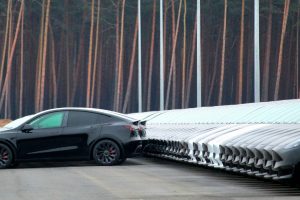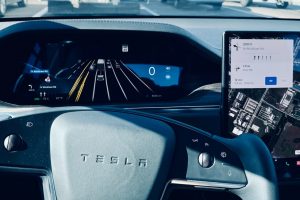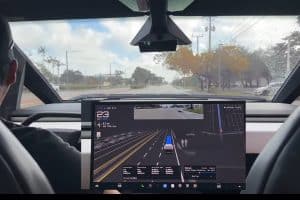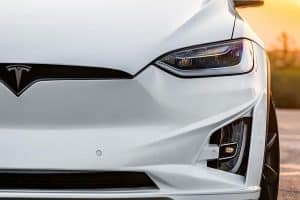- 🚗 NHTSA has launched a probe into Tesla’s Full Self-Driving software, covering 2.4 million vehicles, due to reported crashes.
- 🌫️ The investigation focuses on Tesla FSD’s ability to handle reduced visibility conditions like sun glare, fog, and dust.
- 🚦 Tesla models involved in the incidents include Cybertruck, Model 3, Model S, Model X, and Model Y.
- 🚑 The probe was initiated following collisions that resulted in one pedestrian fatality and one injury.
- 🕵️ The Office of Defects Investigation is managing the case to ensure Tesla’s software can safely detect and respond in challenging driving conditions.
In recent years, Tesla’s Full Self-Driving software (FSD) has been at the forefront of autonomous vehicle technology. As the world moves towards automation, the importance of ensuring safety in such systems cannot be overstated. The National Highway Traffic Safety Administration (NHTSA) has launched a probe into Tesla’s FSD involving 2.4 million vehicles, following reports of multiple crashes. This investigation spotlights the critical issue of vehicle safety in conditions of reduced visibility, such as fog, dust, and sun glare.
The Scope of NHTSA’s Investigation
The NHTSA’s probe seeks to understand the capabilities and limitations of Tesla’s FSD software under problematic conditions. The investigation primarily involves:
- Affected Tesla Models: The models under investigation include the Cybertruck, Model 3, Model S, Model X, and Model Y. These vehicles are equipped with either FSD-Beta or FSD-Supervised systems.
- Safety Prioritization: The core objective is to ensure that Tesla’s software can effectively detect and respond to varying and challenging conditions, minimizing the risk of accidents.
- Reported Incidents: The probe was catalyzed by crashes that have resulted in one pedestrian fatality and another injury. Such incidents raise concerns about the software’s current operational integrity.
Challenges Posed by Low Visibility Conditions
Understanding Tesla’s FSD Capabilities
Tesla’s FSD aims to deliver a fully autonomous driving experience, but low visibility conditions pose significant challenges. These conditions can include:
- Sun Glare: A leading cause of temporary visibility reduction, sun glare can significantly affect a vehicle’s ability to perceive its surroundings.
- Fog and Dust: These natural phenomena can obscure vision and sensor effectiveness, making it difficult for FSD systems to operate optimally.
Analyses and Expectations
The NHTSA’s examination will likely explore the following aspects:
- Sensor Technology: Evaluation of the sensors and cameras used in FSD systems to ensure they can penetrate low visibility.
- Software Algorithms: Investigation into the algorithms responsible for processing environmental data and making real-time driving decisions.
Implications and Insights
Potential Outcomes of the Investigation
- Modifications and Recalls: Depending on the investigation results, Tesla may need to update its software or recall certain models to address identified risks.
- Regulatory Frameworks: This probe could lead to stricter regulations and industry standards for autonomous vehicles, particularly regarding safety in adverse conditions.
- Public Perception and Trust: As with any innovative technology, maintaining public trust is crucial. The outcome of this probe could significantly influence consumer confidence in autonomous vehicles.
Expert Opinions
While Tesla’s ambitious goals for FSD technology are commendable, the balance between innovation and safety must always tilt towards the latter. Experts suggest that while progress is being made, autonomous systems need robust calibration to deal with environmental variables.
Conclusion
Tesla’s journey toward achieving full autonomy is both exciting and fraught with challenges. The NHTSA’s investigation underscores the importance of maintaining a vigilant approach to safety as the company pushes the boundaries of what’s possible. As this probe unfolds, it will likely provide valuable lessons—not just for Tesla, but for the entire autonomous vehicle industry.





